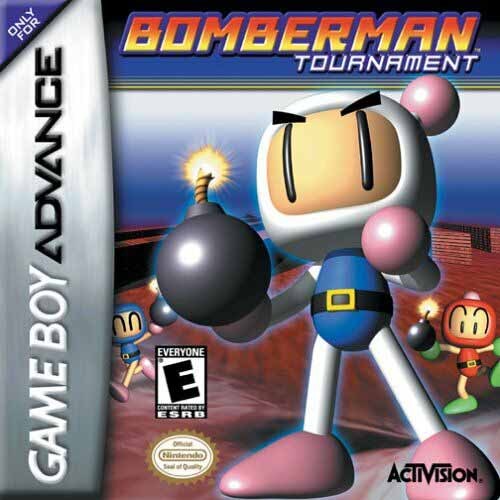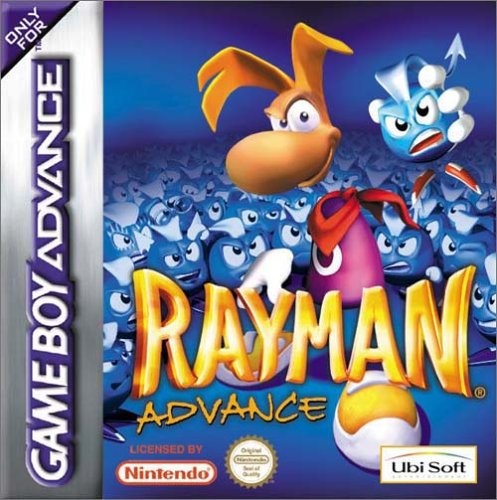0020 - Yu-Gi-Oh! Dungeon Dice Monsters (J)(Rapid Fire)
Dungeon Dice Monsters, or DDM for short, is a board game in the anime and manga series Yu-Gi-Oh!. It is seen in the manga and in the second series anime (Yu-Gi-Oh! Duel Monsters)
In Dungeon Dice monsters, there is a tiled board of 13X19 tiles (13 tiles wide) on which play is conducted. On either end of the board sits a "Dice Master" (on the 7th tile from each side on the row closest to the players) representing either player. Each Dice Master has 3 Heart Points. As with Life Points, the first player to lose all their Heart Points loses.
Dungeon Master, also called the Die Master: This is a representation of the player. Dungeon Masters cannot attack or defend. It cannot move and has 3 Heart points. The Dungeon Master is not affected by items or abilities that affect monsters in the Dungeon. The only way to destroy the Dungeon Master is by attacking it. Each attack removes one Heart Point.
Dice Pool: The 15 Dice a player uses. Players are allowed to roll 3 dice per turn and can collect Crests or Summon. Once a die is used for a Summon, it cannot be used again. Players are only allowed 10 Summons in a game, leaving 5 dice to collect crests with. The dice can be used to summon monsters or items.
Crest Pool: The place where a player's Crests (Except Summon Crests) are stored. The Crests rolled are stored in the Crest Pool until a player uses them. A player cannot use Crests from the opponent's Pool.
Dungeon Path: Created when monsters are Summoned, it is needed so players can attack each other and move about the board.
Obstacles: Squares placed on a board, neither player can Summon a monster in such a way that their Dungeon Path would lie adjacent to the Obstacle. Strategic placing of Obstacles can cut off a player's main route of Summoning and make the game much more difficult. In the Game Boy game Dungeon Dice Monsters, later levels have Obstacles placed in such a way to only hinder the human player, giving them a large handicap.
-http://en.wikipedia.org/wiki/Dungeon_Dice_Monsters
0058 - Bomberman Tournament (U)(Mode7)
Bomberman Tournament (known as Bomberman Story in Japan) was a game in the long standing Bomberman series for the GBA. The game contains a fully realized multiplayer battle mode between linked Game Boy Advances. The player and up to three friends can compete in any of the game's eight multiplayer battle arenas, each of which has its own unique gameplay twist.
0050 - Super Mario Advance (E)(Cezar)
The plot is the same as in Rayman 1. The evil Mr. Dark has stolen the Great Protoon, kidnapped all of the Electoons and defeated Betilla the Fairy. Rayman has to travel through 5 worlds before finally meeting up with Mr Dark and defeating him. T
he music was altered to fit the GBA style. The "level complete" music is also absent from the game, left with nothing but Rayman doing his victory pose with the "yeah!" exclamation.
Many in-game cheat codes have been added that were absent from the original game. The player can press a certain combination of buttons at the right time in order to achieve a specific goal in the game, such as unlocking all the Electoons in a level, or gaining 99 lives.
There is no way to change the controls as there was in Rayman 1.
On the map screen, the floating present is removed
- http://rayman.wikia.com/wiki/Rayman_Advance
0025 - Super Mario Advance (U)(Eurasia)
Bei Super Mario Advance handelt es sich um eine vierteilige Reihe von älteren Super-Mario-Spielen, die in überarbeiteter Form von 2001 bis 2003 für die tragbare Konsole Game Boy Advance (GBA) herausgegeben wurde. Bei den überarbeiteten Spielen handelt es sich um Super Mario Bros. 2, Super Mario World, Super Mario World 2: Yoshi’s Island sowie Super Mario Bros. 3. Die Spiele, die ursprünglich von 1988 bis 1995 für das Nintendo Entertainment System (NES) beziehungsweise das Super Nintendo Entertainment System (SNES) erschienen waren, wurden einerseits sowohl grafisch wie auch akustisch an das Niveau der Konsole angepasst, andererseits auch inhaltlich verbessert. Ferner können alle Spiele speichern. Neben dem eigentlichen Spiel enthalten die Module auch eine neue Version vom Arcade-Klassiker Mario Bros., welche via Link-Kabel mit bis zu vier Spielern gespielt werden kann. Gemeinsam verkauften sich die vier Spiele 19,06 Millionen Mal.[1]
- http://de.wikipedia.org/wiki/Super_Mario_Advance
0898 - Pokemon Sapphire (U)
Pokémon Ruby Version and Sapphire Version (ポケットモンスター ルビー・サファイア Poketto Monsutā Rubī Safaia?, "Pocket Monsters: Ruby & Sapphire") are the third installments of the Pokémon series of role-playing video games, developed by Game Freak and published by Nintendo for the Game Boy Advance. The games were first released in Japan in late 2002 and later released to the rest of the world in 2003 (North America, Australia, and Europe). Pokémon Emerald, a special edition version, was released two years later in each region. These three games (Pokémon Ruby, Sapphire, and Emerald) are part of the third generation of the Pokémon video game series, also known as the "advanced generation".
The gameplay is mostly unchanged from the previous games; the player controls the main character from an overhead perspective, and the controls are largely the same as those of previous games. As with previous games, the main objectives are to catch all of the Pokémon in the games and defeat the Elite Four (a group of Pokémon trainers); also like their predecessors, the games' main subplot involves the main character defeating a criminal organization that attempts to take over the region. New features, such as double battles and Pokémon abilities, have been added. As the Game Boy Advance is more powerful than its predecessors, four players may be connected at a time instead of the previous limit of two. Additionally, the games can be connected to an E-Reader or other advanced generation Pokémon games.
Ruby and Sapphire received mostly positive reviews, though critics were divided in their assessment of the games, especially on the gameplay and graphics. Most of the complaints focused on the fact that the gameplay had not changed much since previous generations. With the popularity of Pokémon on the decline and the rising popularity of Yu-Gi-Oh! at the time, the games sold less than previous generations. However, they were still commercial successes: with around 13 million copies sold, they are the best-selling games for the Game Boy Advance.
en.wikipedia.org/wiki/Pok%C3%A9mon_Ruby_and_Sapphire
2485 - Pokemon Mystery Dungeon - Red Rescue Team (U)(RDG)
For the first time ever, the player is a Pokemon and speaks & interacts with other characters in a world populated only by Pokemon
A deep, involving and dramatic story brings the player into a world of Pokemon not seen or experienced before
Strategic battles enhance the adventure
Randomly generated dungeons make every mission unique
Abonnieren
Posts (Atom)





